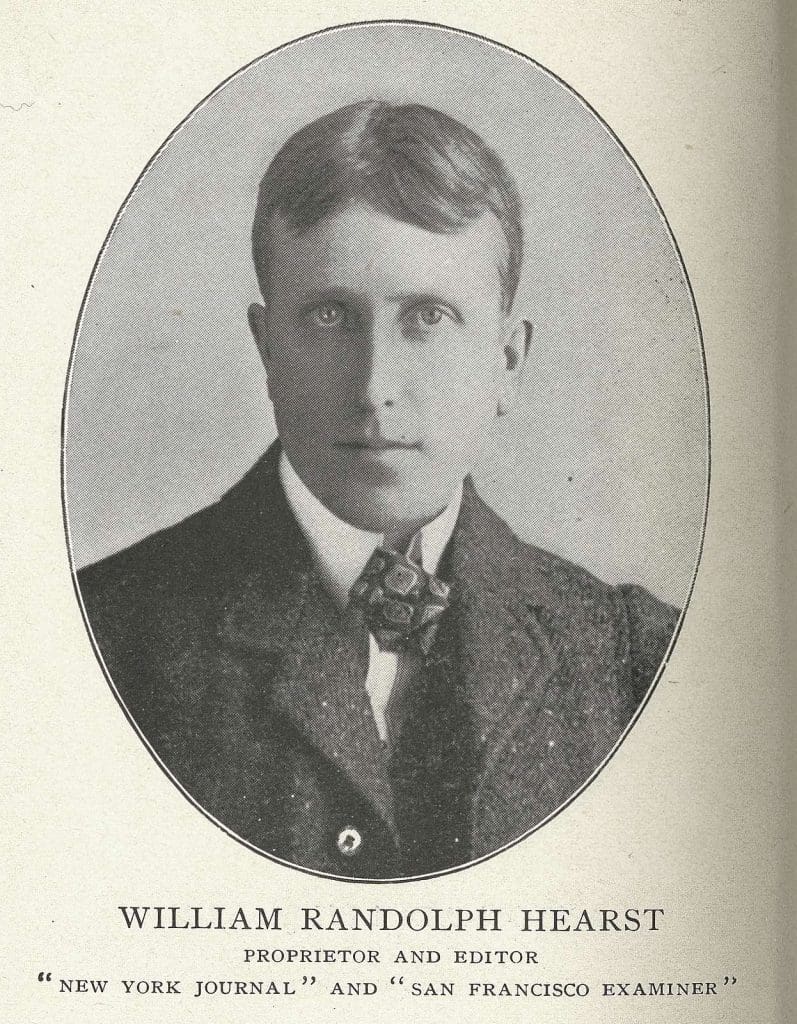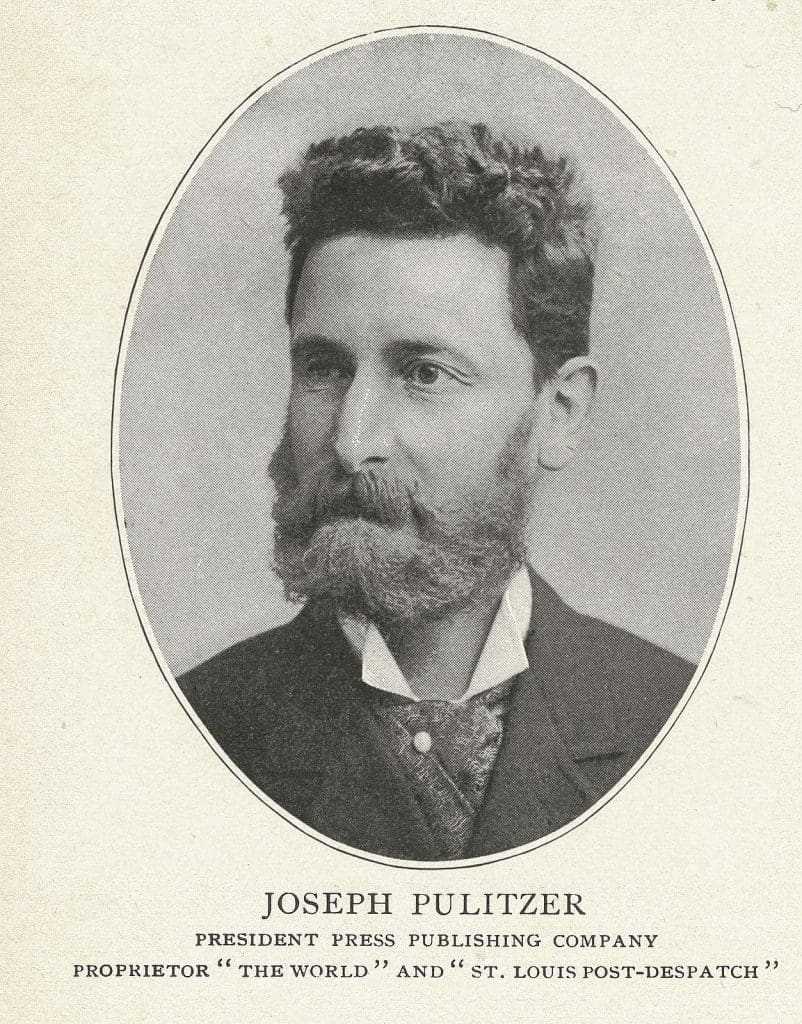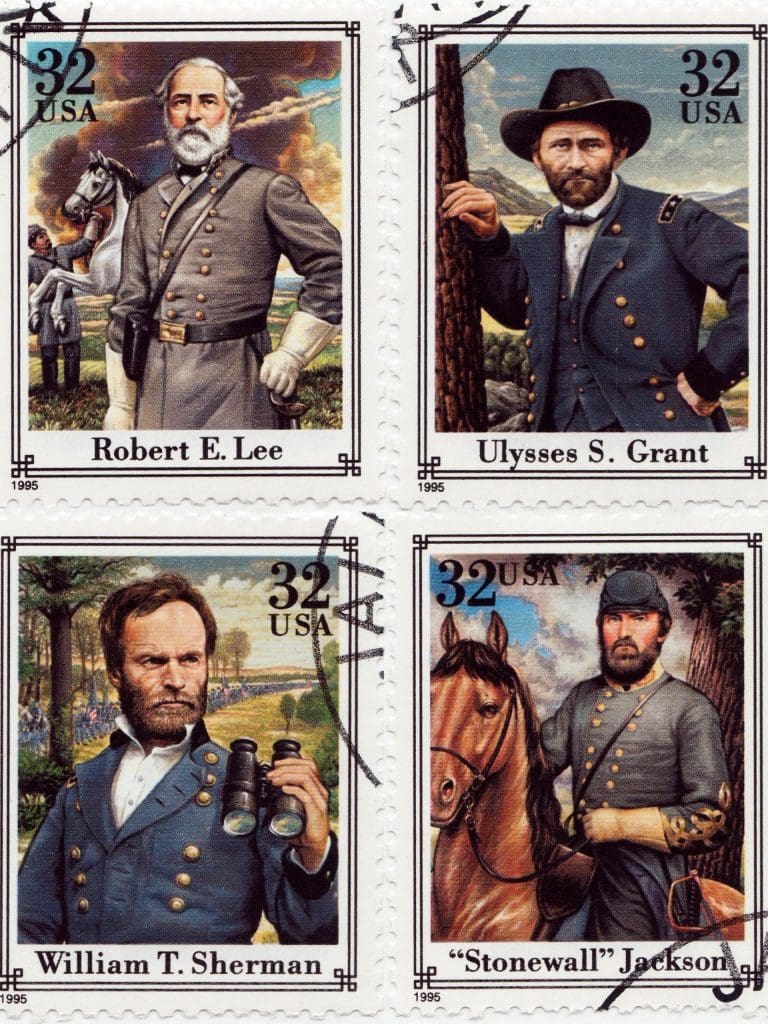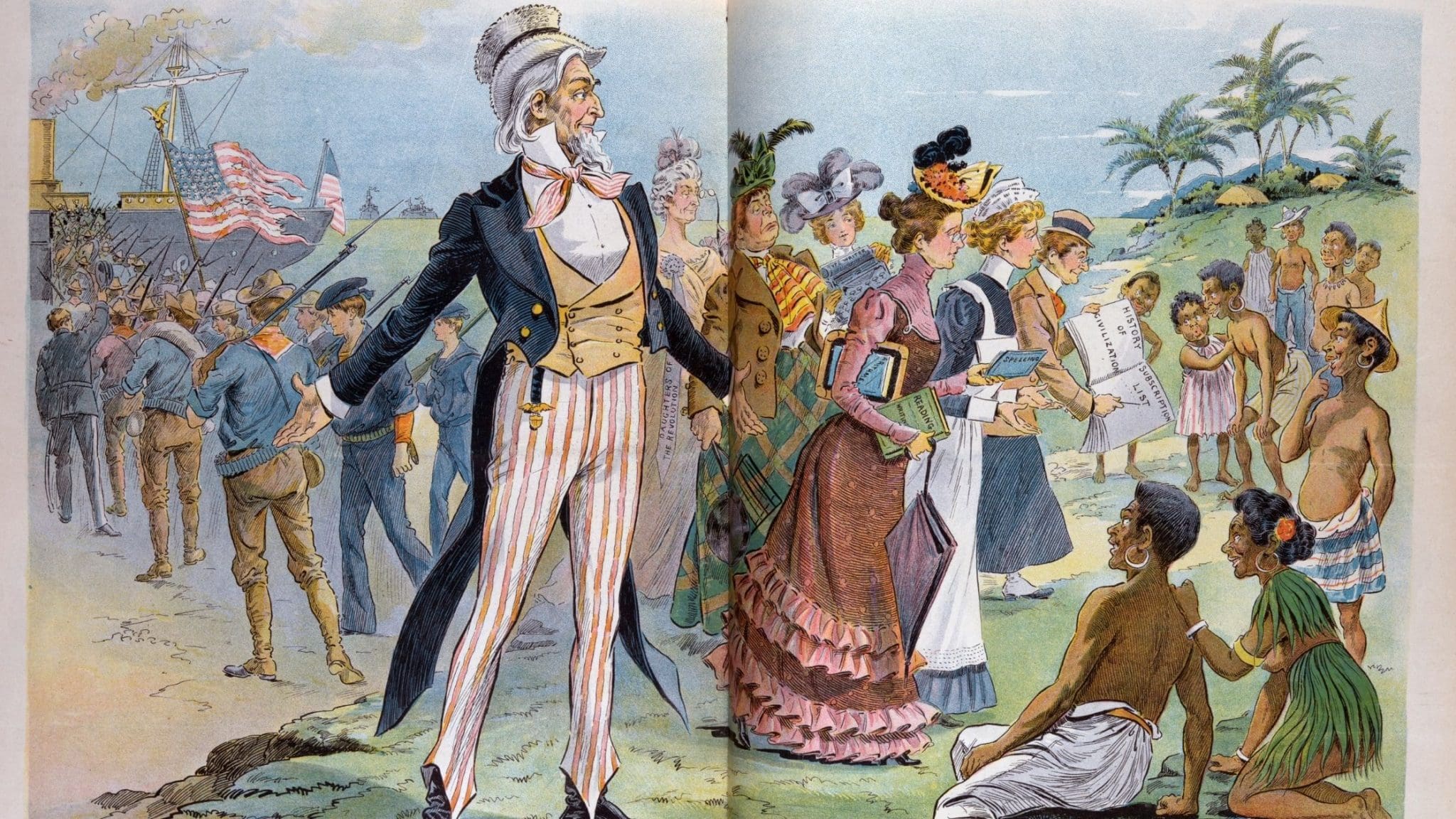By: Juanandrés Aguado Trujillo.”If they’ll only be good. Created by: Ehrhart, S. D. (Samuel D.), approximately 1862-1937.
Illustration shows Uncle Sam standing at center, gesturing to the left toward American soldiers boarding ships to return to America after defeating the Spanish in the Philippines, and gesturing to the right toward a group of matronly women, one labeled “Daughters of the Revolution”, who have just arrived to educate the peoples of the Philippines.” Library of Congress.
In order to talk about what role did the media play in the Spanish-American War, we must first contextualize a little about what was happening in America and Europe during this time to understand how the confrontation of the American forces against the Spanish troops originated.
The Spanish-American War context
The 19th century was one of the worst times for the Spanish crown. Firstly, because of the Napoleonic invasion of Spain, better known as the War of Independence (1808-1813) or the Six Years’ War, in which the Spanish crown had to fight for the independence of Spain against the French Empire. And while this was happening, several Latin American nations undertook their independence campaigns, such as Mexico, Argentina, and Colombia.
By this time, Spain only retained stability in its colonies of Cuba and Puerto Rico. Meanwhile, the United States already possessed all its continental territory in North America and influenced Hawaii and American Samoa, located in the Pacific Ocean.
Yellow Journalism to open fire
The United States had already shown interest in buying the colony of Cuba from Spain earlier. Also, there were already some independence movements seeking to gain control of the island.
However, a definitive fact for this war was triggered by the tabloid press that William Randolph Hearst owner of the New York Journal and Joseph Pulitzer of the New York World were pushing in New York through their media to dramatize what was happening in Cuba.
In this way, they published top-selling stories. They denounced the harshness of the Spanish regime on the islanders and highlighted the nobility of the revolutionaries, occasionally publishing exciting stories accompanied by eye-catching drawings, which turned out to be false.
The turning point in which yellow journalism proved to be most influential was when, early in 1898, the United States sent a battleship called the USS Maine into Havana harbor on January 25, without prior notice to the Spanish authorities. And due to facts that historians have not yet clarified, the ship exploded and sank on the night of February 15, causing death to 254 crew members on board.
This fact was used by Hearst and Pulitzer to inflame tensions, publishing a series of rumors of plots to sink the ship. Later, a U.S. naval investigation report stated that a mine in the harbor had caused the explosion, and it was thus that journalists took the opportunity to call for war between the two nations. In early May, the Spanish-American war flared up.


The Spanish-American War results
The war ended when Spain was defeated by the coalition of the U.S. Army with the revolutionary army. As a consequence, Spain lost its colonies of Cuba and Puerto Rico in the Caribbean, as well as the Philippines and Guam in the Pacific, after signing the Treaty of Paris in 1898.
The comfrontation was concise, lasting only from May to August 1898. Still, it would define the United States as a world power and started the war tabloid press to intervene in armed conflicts thereafter, as we see today with the Russo-Ukrainian war in 2022.

If you are interested in more stories like this one, stay tuned to the best Spanish Newspaper. Everything you want to know about business for the Spanish-speaking community here at Negocios Now.











